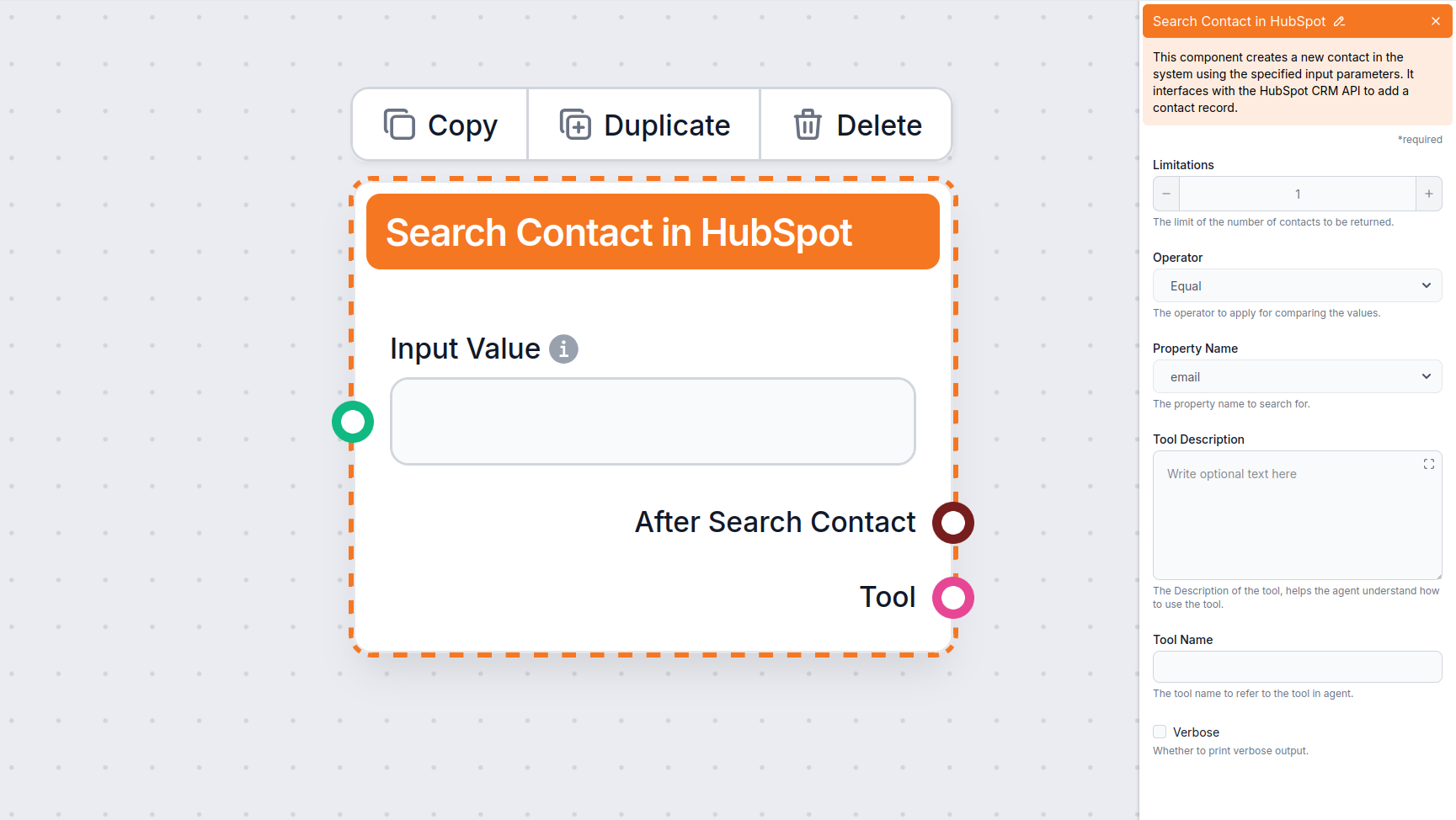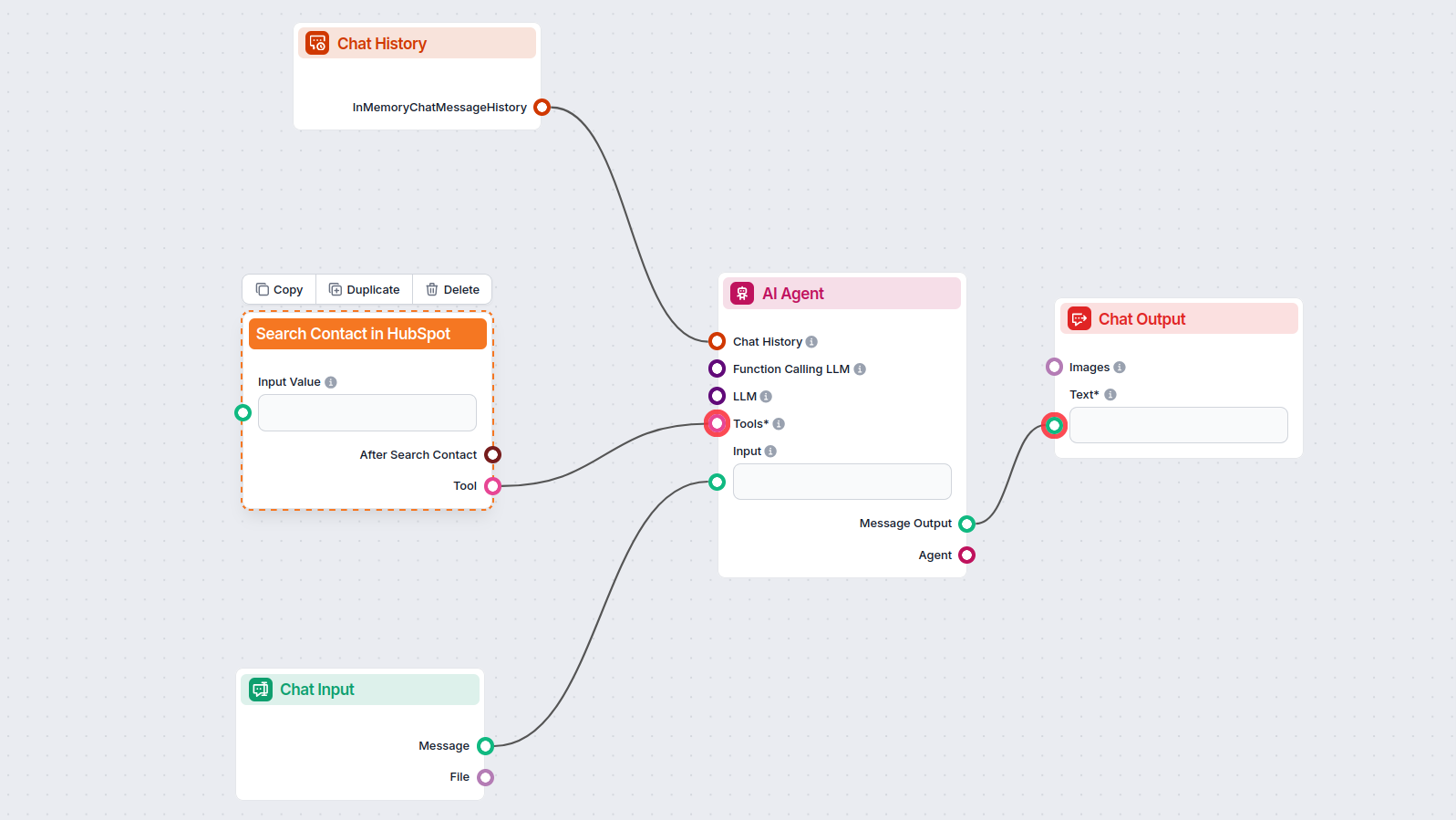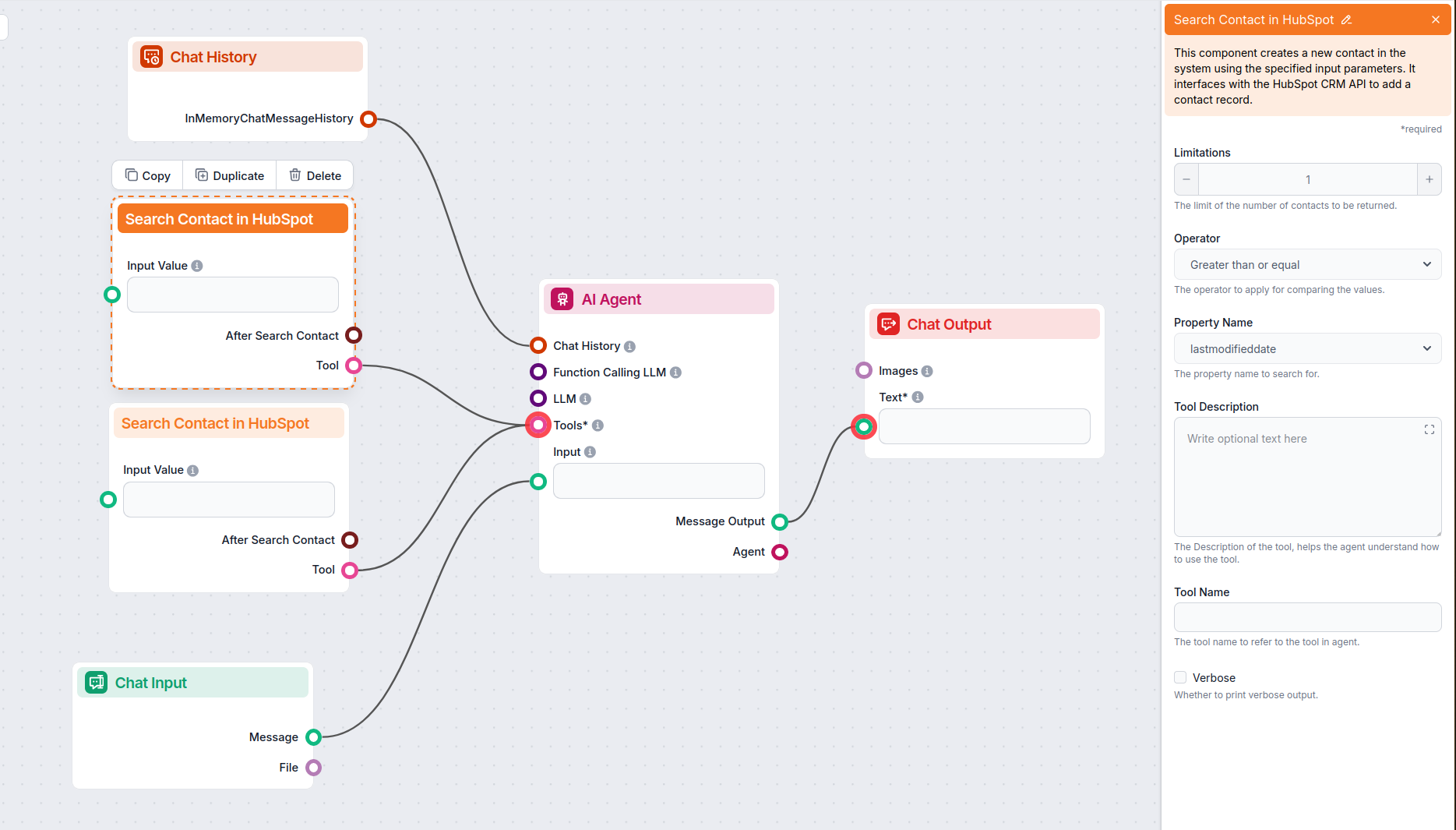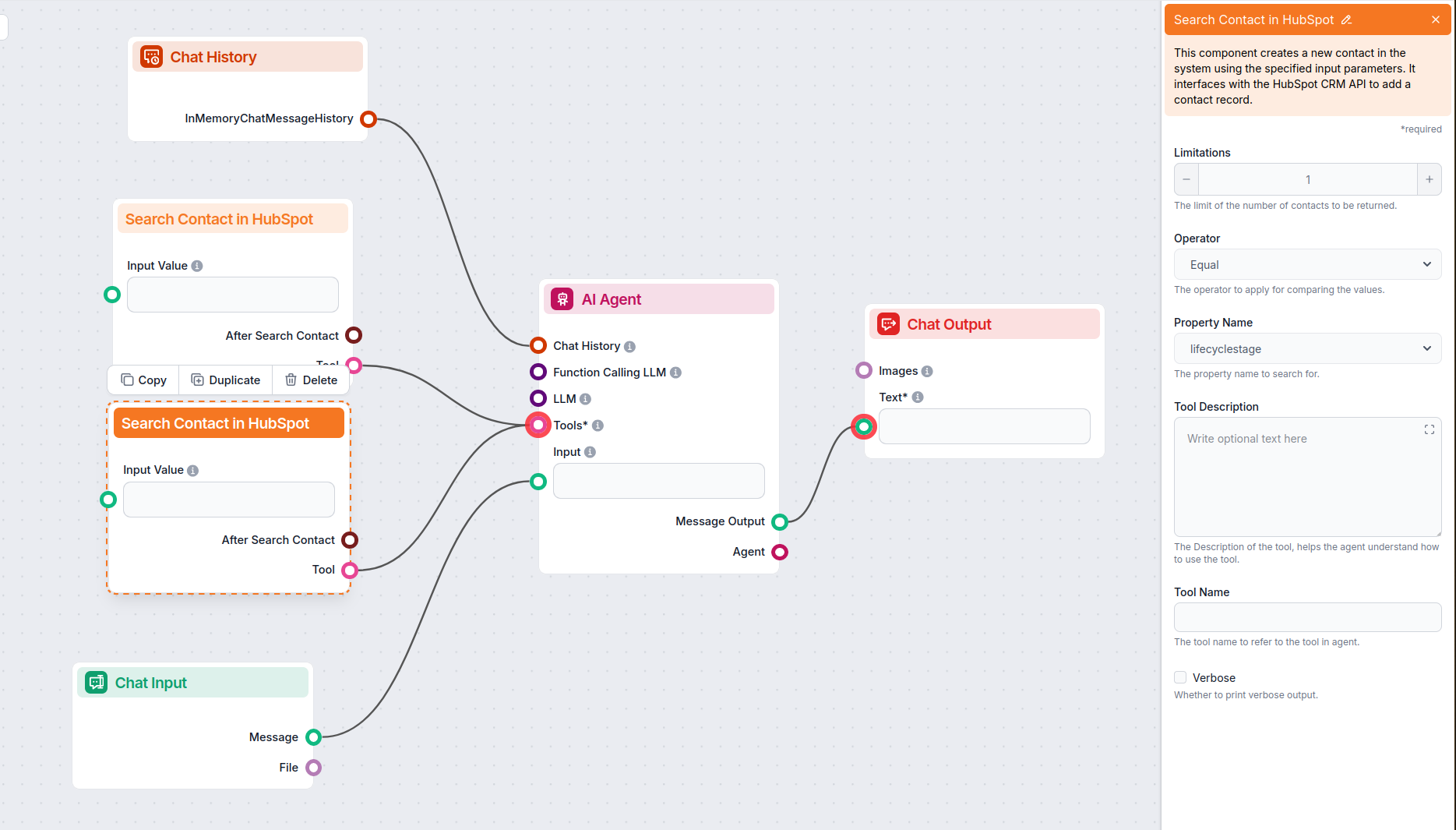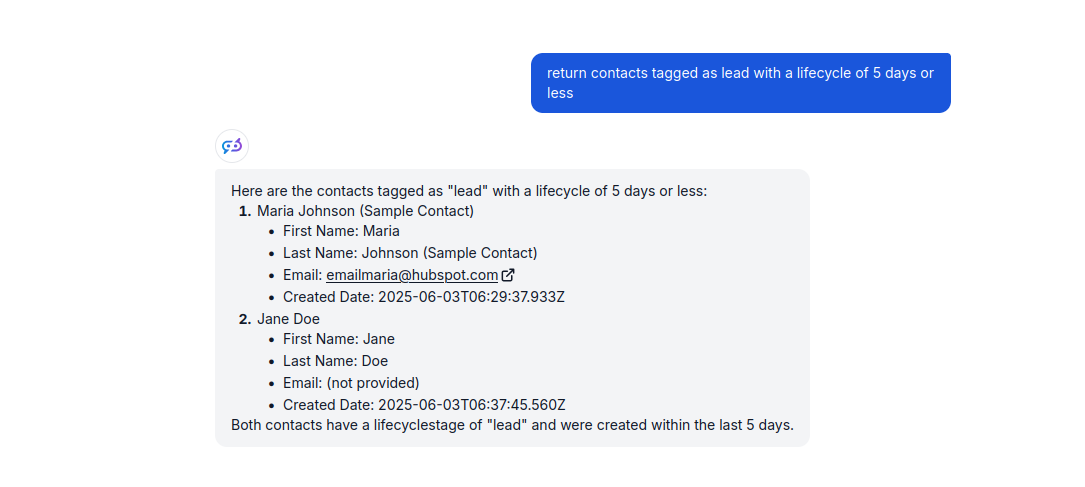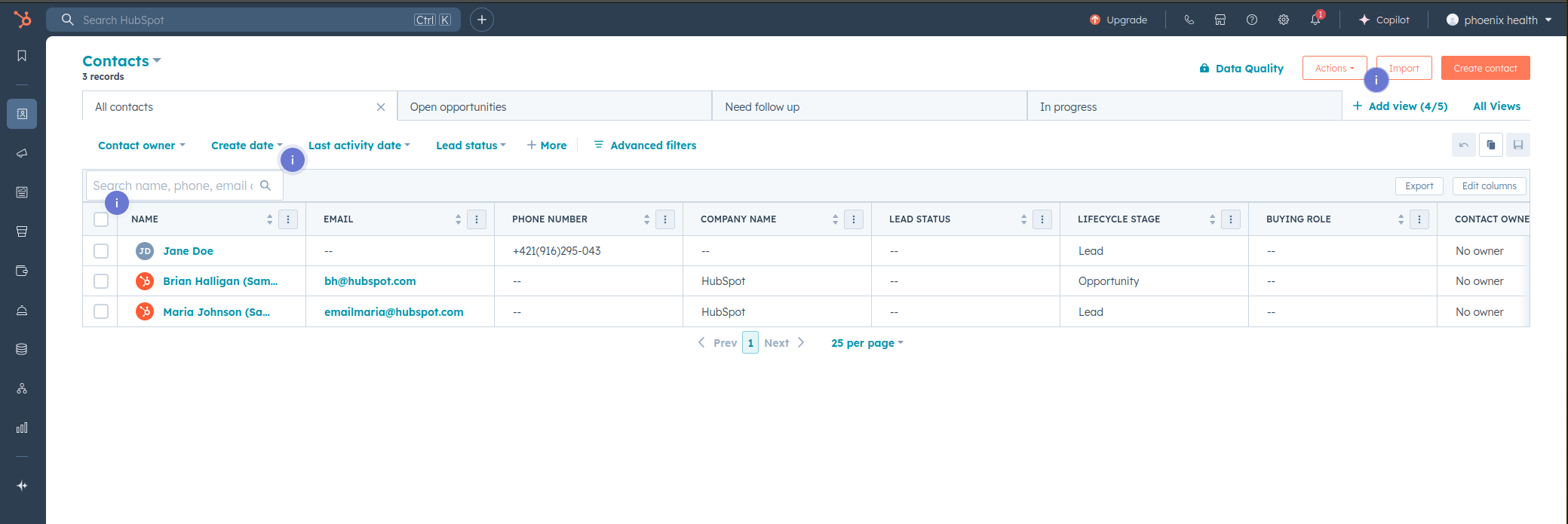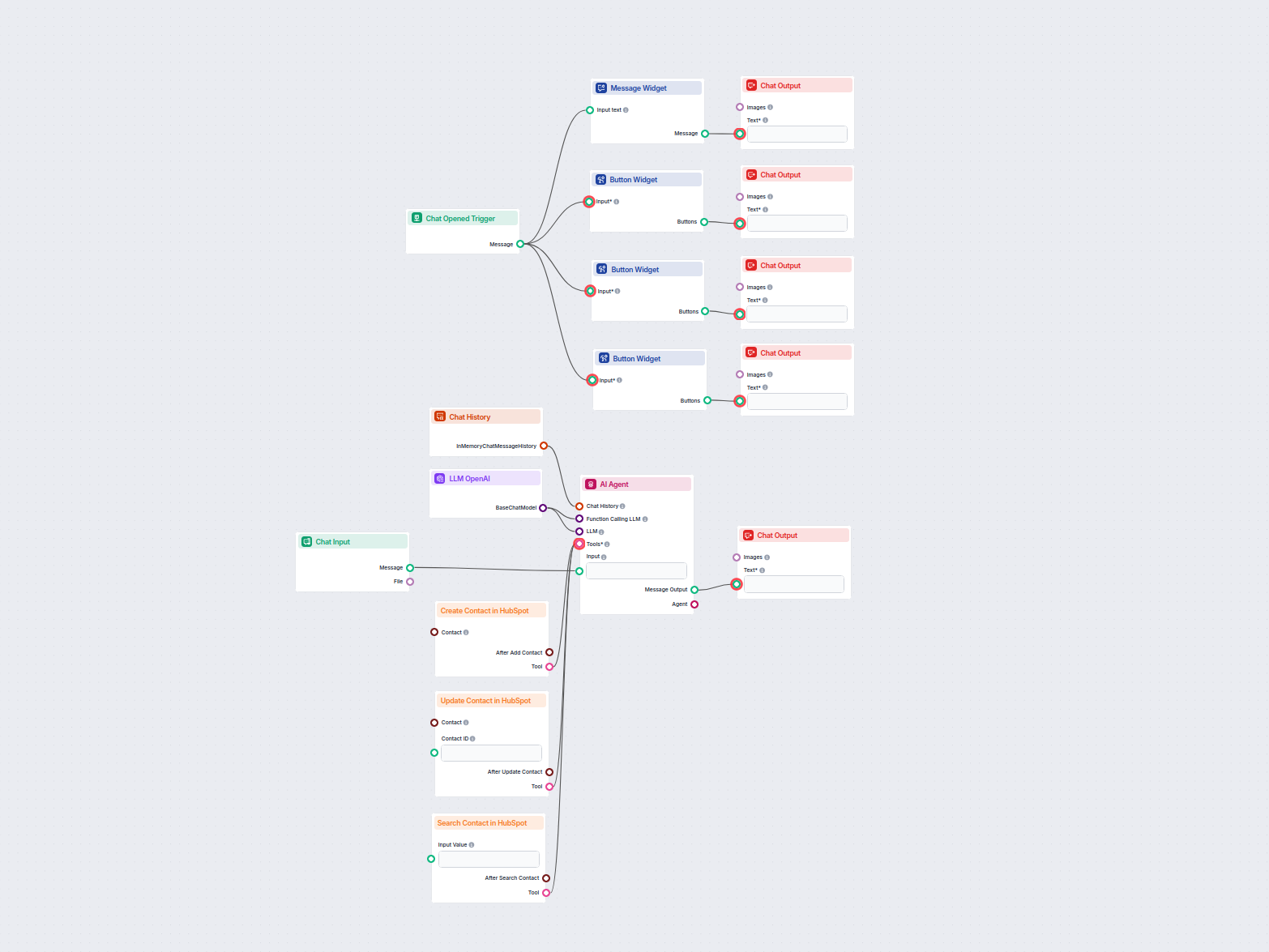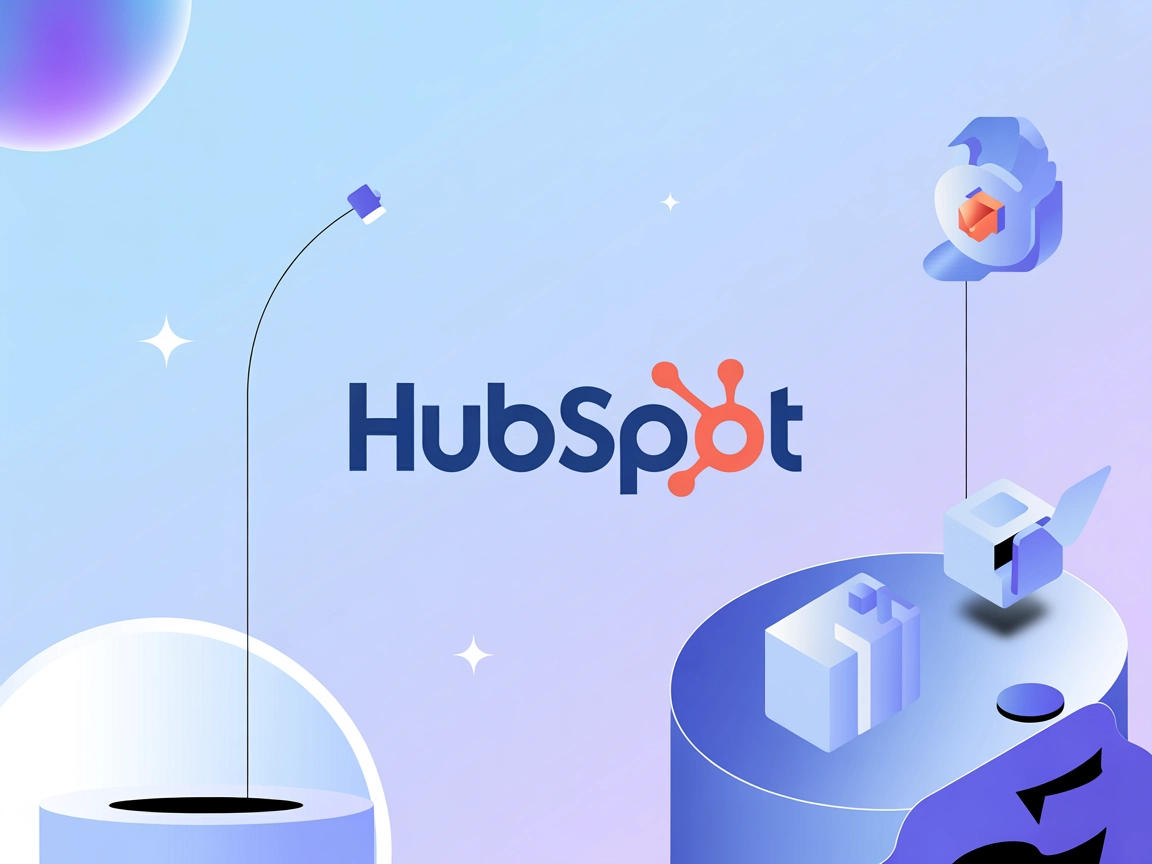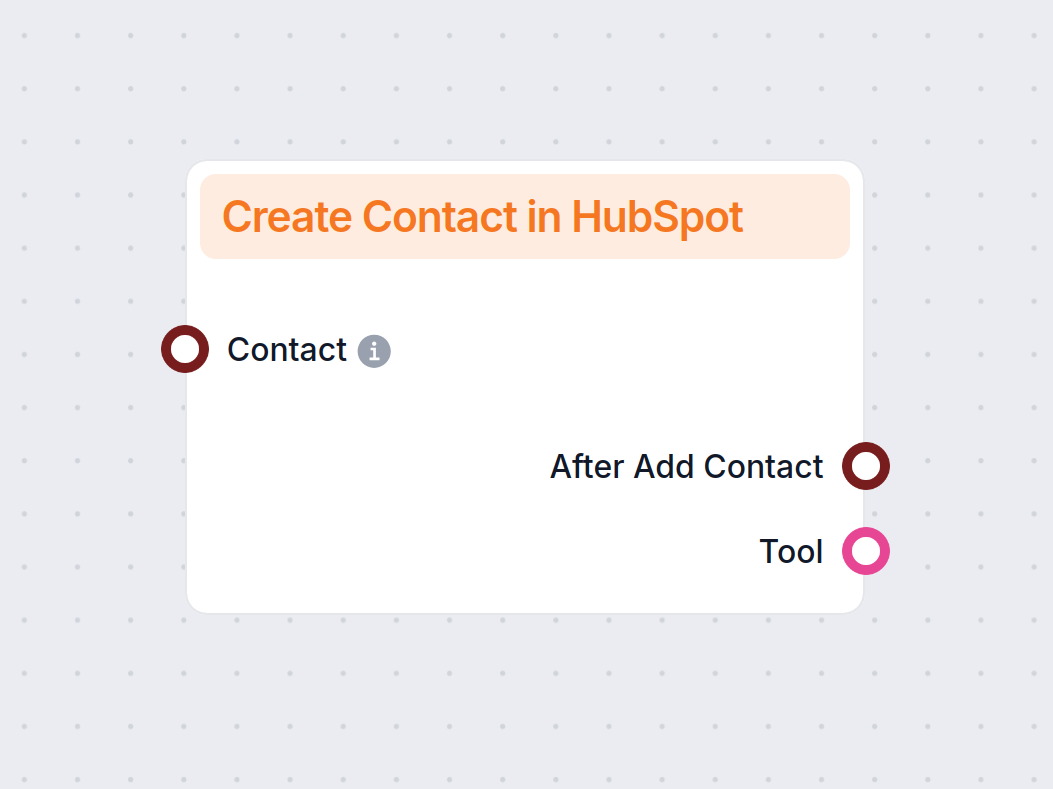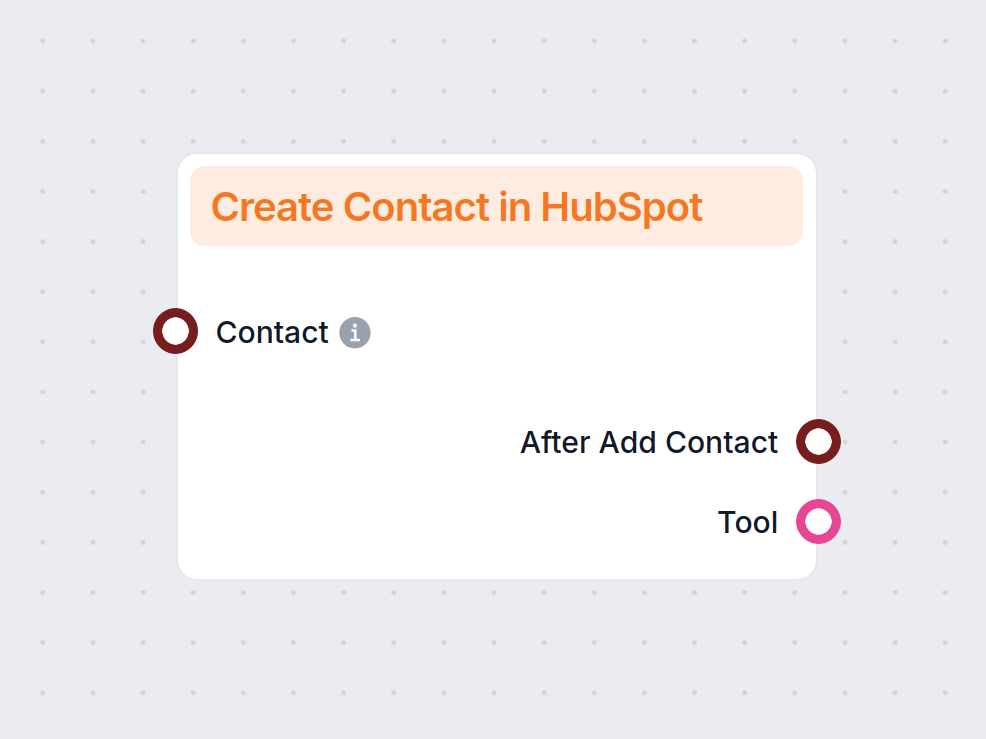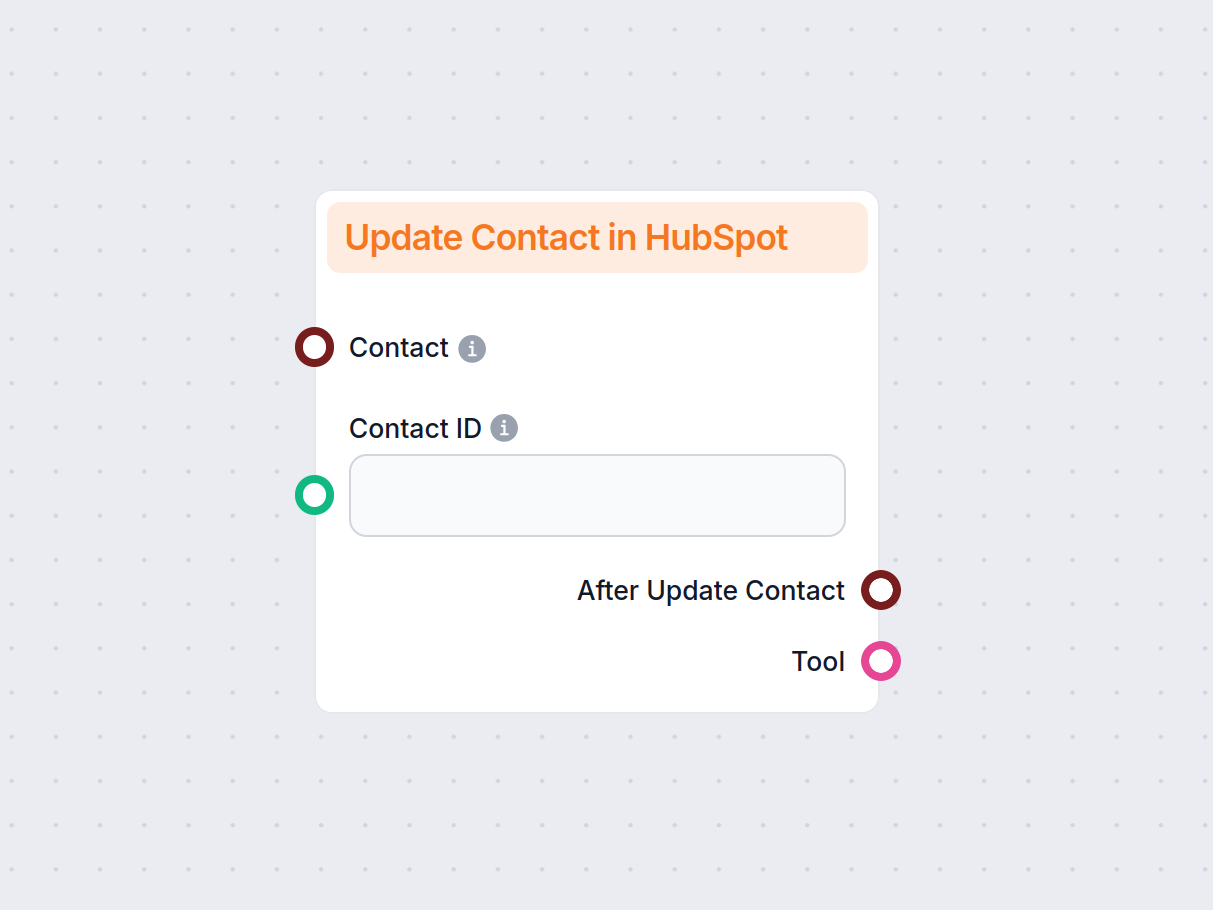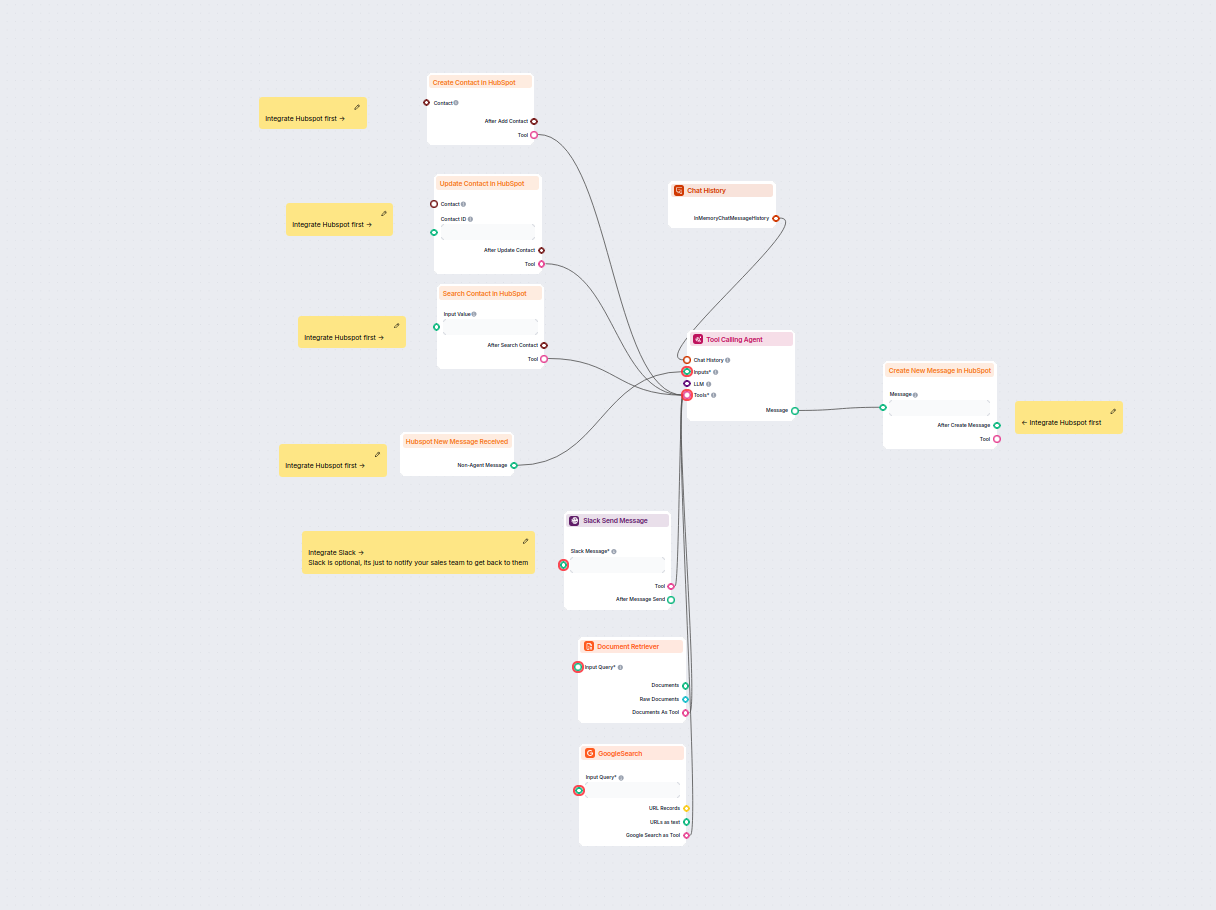
AI Chatbot do Generowania Leadów w HubSpot
Ten workflow oparty na AI automatyzuje kwalifikację leadów i zarządzanie kontaktami w HubSpot. Chatbot zbiera informacje o użytkowniku, bada szczegóły firmy, id...
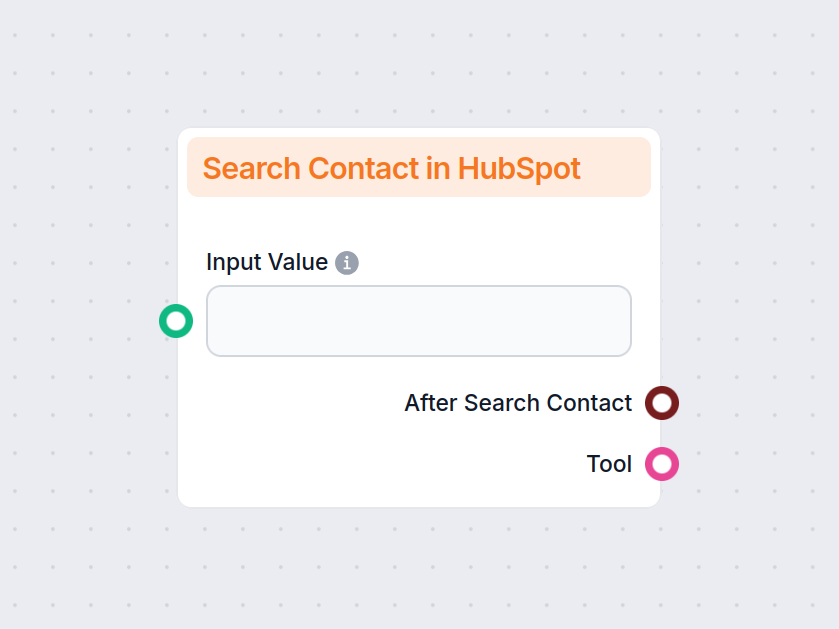
Komponent Wyszukiwanie kontaktu w HubSpot umożliwia elastyczne wyszukiwanie i filtrowanie kontaktów HubSpot według dowolnej właściwości, co pozwala na tworzenie dopasowanych przepływów pracy, raportowanie i automatyzację.
Opis komponentu
The Search Contact in HubSpot component lets you find and filter contacts based on any possible HubSpot property, including custom properties. Coupled with operator options, it allows for dozens of unique use cases.
Operators are mathematical functions describing the relationship between your query and what you’re searching for. For example, you can search for an exact match of emails, but also for contacts created after a certain date, contacts missing specific properties, and much more.
You can search by HubSpot properties or custom objects. Coupled with operator options, this allows for dozens of unique use cases. In addition to contact information such as names, emails, or companies, you can also filter by creation or modification date, lifecycle stage, and more.
Now that we’ve covered what the component does, let’s take a look at how to use it. Before seeing it in action, here are some popular use cases to show the kinds of problems this component can solve:
Let’s test out the component. We’ll create a very simple stale lead detection Flow. In other words, we will search for contacts with lifecycle stage = lead AND last modified date X days ago.
For this purpose, we will be testing it as a chatflow. However, this process can be fully automated as a cron job and output wherever you need, whether Slack or Gmail notifications for easy access, or a spreadsheet for creating automatic reports.
Steps:
Let’s test it out. We will send the following instructions in chat:
Return contacts where lifecycle stage is lead AND last modified date greater than or equal 5 days.
In a fully automated workflow, you’d permanently insert the instructions into the AI Agents and Search Contact component settings. Since we’re doing a chatflow, we can simply send the instructions in chat.
After a bit of processing, the Flow returned a single contact:
Let’s see if the result is correct. Looking into our HubSpot contact list, we can see 4 records. However, one of them is a customer. And the two others were modified today (April 10th). Meaning, the contact the Flow returned is in fact the only one to fit the given criteria:
In our example, we prompt the Flow manually, and the search results are returned in chat. However, you can simply rework it into a fully automated solution by running it as a cron job and swapping the chat output for any output source you need, such as the Create Google Sheet component for automated reports and Send Slack message or Email notification tool for notifications.
Aby pomóc Ci szybko zacząć, przygotowaliśmy kilka przykładowych szablonów przepływu, które pokazują, jak efektywnie używać komponentu Wyszukiwanie kontaktu w HubSpot. Te szablony prezentują różne przypadki użycia i najlepsze praktyki, ułatwiając zrozumienie i implementację komponentu w Twoich własnych projektach.
Ten workflow oparty na AI automatyzuje kwalifikację leadów i zarządzanie kontaktami w HubSpot. Chatbot zbiera informacje o użytkowniku, bada szczegóły firmy, id...
Ten przepływ pracy oparty na AI automatyzuje zarządzanie kontaktami w HubSpot CRM. Użytkownicy mogą łatwo wyszukiwać, tworzyć lub aktualizować kontakty poprzez ...
Płynnie połącz FlowHunt z HubSpot, aby zautomatyzować swoje procesy CRM i działania marketingowe.
To narzędzie umożliwiające wyszukiwanie i filtrowanie kontaktów w HubSpot przy użyciu dowolnej właściwości — w tym pól niestandardowych — oraz zaawansowanych operatorów, co pozwala na precyzyjne zapytania i zautomatyzowane przepływy pracy.
Przykładowe zastosowania to higiena danych i zgodność, wykrywanie nieaktywnych leadów, kampanie geolokalizacyjne, oferty czasowe, przypomnienia o odnowieniu, alerty o nowych kontaktach, routing sprzedaży i inteligentne ścieżki treści.
Tak, możesz w pełni zautomatyzować wyszukiwania i wysyłać wyniki do różnych miejsc, takich jak Slack, Google Sheets lub e-mail, obsługując zaplanowane przepływy oraz powiadomienia w czasie rzeczywistym.
Obsługiwane operatory to równa się, większe niż, mniejsze niż, pomiędzy, zawiera, nie należy do i inne, co pozwala na elastyczne i szczegółowe wyszukiwania po wszystkich właściwościach kontaktów HubSpot.
Jak najbardziej. Możesz połączyć go z Agentami AI i innymi komponentami, aby budować kompletne przepływy, np. do śledzenia leadów, przypomnień, synchronizacji i innych zadań.
Odkryj, jak FlowHunt pomaga bez wysiłku znajdować i filtrować kontakty w HubSpot, aby inteligentniej zarządzać CRM i automatyzacją.
Integracja HubSpot z FlowHunt zajmuje tylko kilka kliknięć i daje dostęp do dziesiątek możliwych przepływów pracy wspieranych przez AI.
Automatyzuj swój HubSpot CRM. Automatycznie wyszukuj i twórz nowe kontakty w HubSpot z różnych źródeł, w tym z wewnętrznych dokumentów i stron internetowych....
Automatyzuj swój HubSpot CRM. Automatycznie wyszukuj i edytuj kontakty HubSpot na podstawie różnych źródeł, w tym dokumentów wewnętrznych i stron internetowych....
